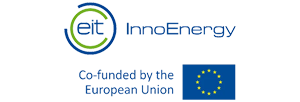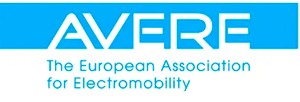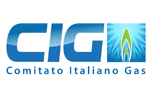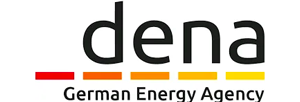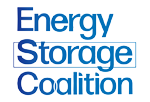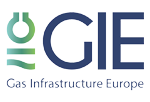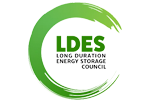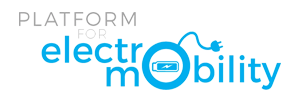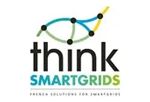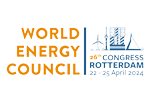Dispatchable Power for a Successful Energy Transition – Capacity Market, Power-to-X & Grid Resilience
)
- Event: Enlit Europe
- Date: 24th October 2024
- By: Discussion Panel (Moderated by Ralph)
- Estimated Read Time: 7–8 minutes
Introduction: Rethinking Dispatchable Power as the Backbone of Net-Zero Ambitions
As the global momentum toward renewable energy intensifies, Europe faces a nuanced but urgent question: how will we ensure system reliability in a carbon-neutral energy landscape?
In an engaging 55-minute discussion, five distinguished experts from leading utilities, industry associations, and innovative energy solution providers debated the form, function, and future of dispatchable power. It's a term that’s gaining increasing relevance—not least because Europe’s renewable energy surge is shifting the focus from “fossil vs. renewable” to “dispatchable vs. non-dispatchable” power.
The panel featured representatives from RWE, EDF, the Polish Electricity Association, Kraken, and Wärtsilä, who examined not just technologies, but also the societal, economic, and regulatory implications of delivering low-carbon, responsive electricity. The conversation revealed both technical depth and meaningful divergence, reflecting the continent’s varied energy profiles and policy orientations.
Below, we unpack the key insights and strategic imperatives discussed by the panel—ranging from the reimagined role of dispatchable generation to consumer flexibility, sector coupling, capacity markets, and the critical role of localisation and innovation.
Dispatchable Power: What It Means, Why It’s Changing
Dr. Tillman Beto of RWE Power opened the session with data-driven clarity regarding future energy needs. Quoting a recent Eurelectric study, he forecasted a 66–100% increase in European electricity demand by 2050, with over 85% of the generation mix expected to come from renewables.
What does this mean for dispatchable generation?
“In the past, dispatchability came for free because most of the infrastructure was traditional and fossil-based,” Beto said. “Today, we have to plan it intentionally—and sustainably.”
He listed the core candidates for low-carbon dispatchable power: abated natural gas, nuclear, hydro, biomass, batteries, hydrogen, and Power-to-X technologies. But he also pointed to new challenges: regulatory resistance, geopolitical dependencies (like reliance on Chinese rare earths), public opposition to certain installations, and unpredictability in supply chains.
Key Quote:
“We’re not just decarbonising—we're de-fossilising. Carbon still has a role, especially in the chemical sector. What we need are smarter, cleaner molecules.”
EDF’s Pieto Bernarda echoed RWE’s position but emphasised that dispatchable must also be low-carbon by design. EDF’s Net Zero 2050 scenario forecasts that around 20% of the future energy mix must be backed by dispatchable, low-emissions generation—hydropower, nuclear, decarbonised thermal systems, and long-term storage options.
Bernarda also stressed demand-side flexibility, storage innovation, and “planning science” through high-fidelity modelling to determine the optimal portfolios of dispatchable energy.
The Polish Challenge: Location, Transmission, and Diversification
From a national perspective, PKEE’s representative, Pawel, described how Poland’s unique energy geography complicates decarbonisation agendas. With energy-intensive industries in the south and emerging wind capacity in the north (over 18 GW planned by 2040), the country faces a mismatch between generation and demand. This misalignment demands urgent investment in grid expansion, transmission efficiency and rapid deployment of local flexibility solutions.
“There’s a misconception that renewables inherently solve the flexibility issue,” he asserted. “But they don’t distribute themselves efficiently across consumption zones.”
Consumer Flexibility: The Untapped Dispatchable Resource
Kraken’s Charlie Johnson shifted the debate to a different cornerstone of dispatchability: the consumer. Her argument was clear—active demand response and consumer-side flexibility are the silent behemoths of the low-carbon transition.
"To achieve 25–30% of dispatchable capacity through consumer assets, we need to rethink market design."
Johnson laid out three imperatives:
1. Market Reform:
- Current markets were designed for fossil-fuel era infrastructure.
- Price signals must account for carbon, location, and grid congestion.
2. Interoperability:
- As more assets connect at the distribution level, standardised digital systems are required to manage millions of devices.
- By 2035, nearly half of all generation will be distribution-connected.
3. Customer Engagement:
- Most households mistrust utilities.
- Success hinges on incentives, seamless UX, and clear value propositions.
Key Statistic
BloombergNEF predicts that 200–300 million devices (from EV chargers to home batteries) will be grid-connected in Europe’s near future. Flexibility will need decentralisation.
Wärtsilä’s Louis Reham brought a systems-level view, arguing for integrated portfolio strategies—wherein dispatchable components must meet location-specific and grid-specific roles. Investments, he warned, need surgical targeting.
“Dispatchable doesn’t mean one-size-fits-all,” Reham explained. “You need generalist technologies to do many jobs, and specialists to perform few jobs exceptionally well—at the right place and scale.”
Estimating the Need: How Much Dispatchable Power is Enough?
“How much do we actually need?” asked moderator Ralph. The answer: it depends—and we may not know yet.
EDF projects 20–30% of the future mix will need to be dispatchable. But according to RWE and PKEE, rigid forecasts aren’t helpful without acknowledging rapidly evolving technologies, consumer behaviours, and market dynamics.
Johnson pointed out that the best way to “calculate the need” is through price-based settlement windows that capture value at increasingly granular intervals. She proposed five-minute settlement periods and locational pricing as mechanisms to uncover real supply/demand needs and flexibility deficits.
“Without proper market signals, you under-incentivise efficiency and overspend on insurance,” she said.
Grid Bottlenecks and the Transmission Puzzle
The panelists acknowledged that system-wide dispatchability is still constrained by limited transmission capacity. Poland and the UK were cited as key examples, where generation geography does not match consumption centres.
Poland’s Pawel spoke of the need for parallel investments in:
- Transmission grids, especially north-to-south corridors.
- Distribution networks for incorporating decentralised storage.
- Market signals to attract investment into flexibility-over-contribution zones.
Hydropower, Batteries, and the Storage Role in Dispatchability
While batteries dominate attention as storage heroes, EDF and RWE pointed out the sheer disparity between energy needs and current storage capacity.
Germany’s pumped hydro capacity stands at just 40 GWh, while its daily consumption amounts to 1.5 TWh—underscoring that storage alone won’t solve dispatchability gaps.
Yet, Peito Bernarda argued that technological diversity is the solution: “We need battery storage, yes. But also molecules—like hydrogen—and deeper sector coupling to unlock seasonal energy flows.”
Sector Coupling and Power-to-X: The Next Evolution
Europe’s electrification drive can’t succeed in a vacuum. The panellists collectively advocated for greater attention to sector coupling, or the convergence of electricity systems with heating, transport, and industrial platforms.
Louis Reham and Tillman Beto both underscored the importance of Power-to-X technologies—such as synthetic fuels and hydrogen—to bridge long-term storage and decarbonisation of hard-to-abate sectors like aviation and petrochemicals.
“Carbon isn’t the enemy—fossils are,” Beto said. “We need carbon for chemistry, industry, and fuels. Power-to-X allows us to decouple carbon from emissions and create dispatchable energy carriers.”
Rewarding Dispatchability: The Capacity Conundrum
The session concluded with an exploration of the role of the capacity market in supporting reliable and responsive generation. A well-designed capacity market, the panel agreed, could play a pivotal role in incentivising dispatchable power infrastructure—particularly storage, flexible generation, and demand response systems.
However, criticism was sharp, especially from Johnson, who stated:
“The GB capacity market has never been called upon. It functions like insurance that never pays out—but customers are still billed.”
Moreover, it lacks a carbon signal. New gas assets are being remunerated well beyond 2035, despite carbon neutrality targets.
Alternative models were discussed, including Italy’s locational incentive schemes and Japan’s distributed subsidies for storage infrastructure. The consensus: Europe needs to refine capacity markets to provide:
- Carbon-weighted incentives.
- Locational accuracy.
- Performance-based funding for real delivery.
Conclusion: Dispatchability is a Collective, Evolving Mission
The Enlit Europe 2024 session on dispatchable power demonstrated that while technologies abound, coordination is lacking. Whether it’s grid capacity, market design, or public trust, dispatchable power is not just a tech challenge—it’s a systemic, social, and economic mission.
Key Takeaways
- Dispatchable generation must be low-carbon and integrated across sectors.
- Consumer flexibility and digital interoperability will play outsized roles.
- Markets must evolve to reflect carbon content, location, and real-time need.
- Storage is necessary, but insufficient without Power-to-X and sector coupling.
- Capacity mechanisms require reform to reward true availability and alignment with climate targets.
One size will not fit all. But with market innovation, policy tweaking, and continued R&D, dispatchable power can underpin a future-proof, resilient low-carbon grid.
The path is complex—but with panels like these, the future is clearer.
Other Past Sessions
-
Event: Enlit Europe 2024 Date: 23rd October 2024 By: Kevin O’Donovan, Emily Stifel, Ross Marcinko, and Giovanni Bodega Estimated Read Time: 5–8 minutes Introduction: Redefining the Future of P ...
-
Event: Enlit Europe 2024 Date: 23rd October 2024 By: Panel Discussion featuring Sebastian Copen, Maxim Suk, Marcia Polti, Jao Raphael, and Nikola Beck Estimated Read Time: 9–10 minutes Introdu ...
-
Event: Enlit Europe 2024 Date: 23rd October 2024 By: Panel Discussion featuring Sebastian Copen, Maxim Suk, Marcia Polti, Jao Raphael, and Nikola Beck Estimated Read Time: 9–10 minutes Introdu ...
-
Event: Enlit Europe Date: 24th October 2024 By: Discussion Panel (Moderated by Ralph) Estimated Read Time: 7–8 minutes Introduction: Rethinking Dispatchable Power as the Backbone of Net-Zero A ...
-
Event: Enlit Europe 2024 Date: 24th October 2024 By: Kate Willard Estimated Read Time: 15–20 minutes Introduction: Reimagining Industry for a Net-Zero Future Are we decarbonising fast enough—a ...
-
Event: Enlit Europe 2024 Date: 23rd October 2024 By: Gaia Gallotti (IDC) – Panel Moderator Estimated Read Time: 7–8 minutes Introduction: Charting the Course for the Utility of the Future The ...
-
Event: Enlit Europe 2024 Date: 23 October 2024 By: Toma Bert (Managing Director, ESMIG) Estimated Read Time: 25'30 minutes Introduction: Smart Metering at the Heart of Europe's Energy Revolution ...
-
Event: Enlit Europe Date: 24th October 2024 By: Kim Chen, Moderator and CEO of Innovation Force Estimated Read Time: 10–12 minutes Quick Summary Cleantech startups are driving the next wave of ...
-
Event: Enlit Europe Date: 24th October 2024 By: Beat Petrovic, Senior Analyst at Ember Estimated Read Time: 10–12 minutes Quick Summary Energy flexibility, smart grid solutions, and grid congest ...
-
Event: Enlit Europe Date: 24th October 2024 By: George Biscardini Estimated Read Time: 10-12 minutes Quick Summary Hydrogen energy in Europe, coordinated energy systems, and integrated energy in ...


)
)
)
)
)
)
)
)
)
)











